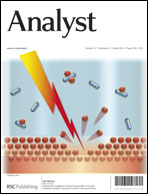Candida “Psilosis” – electromigration techniques and MALDI-TOF mass spectrometry for phenotypical discrimination
Abstract
Biofilm-positive strains of Candida parapsilosis are the second most common yeasts responsible for bloodstream infections. This pathogen is difficult to identify by standard methods from other phenotypically indistinguishable species, biofilm-negative Candida orthopsilosis and biofilm-positive Candida metapsilosis. From a medical point of view, important information is especially whether the strains form biofilm. The biofilm formation enables yeast to colonize artificial surfaces thereby protecting the yeast cell against antifungal agents. The commonly used genotypic methods including different modifications of the polymerase chain reaction have some disadvantages. Therefore, a rapid and reliable method able to identify phenotypically indistinguishable C. “psilosis” species is still of great interest. In this study, the four well-established analytical techniques: gel isoelectric focusing, sodium dodecyl sulfate polyacrylamide gel electrophoresis, two-dimensional gel electrophoresis and matrix-assisted laser desorption/ionization time-of-flight mass spectrometry, were applied in order to discriminate C. “psilosis” species. The ability of these techniques to differentiate between biofilm-positive and biofilm-negative strains was further investigated. Our results have revealed that the proposed methods, especially matrix-assisted laser desorption/ionization time-of-flight mass spectrometry of intact yeast cells, can be used as the efficient tools for discrimination and identification of the phenotypically indistinguishable microorganisms.


 Please wait while we load your content...
Please wait while we load your content...